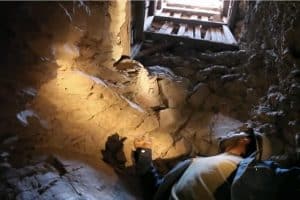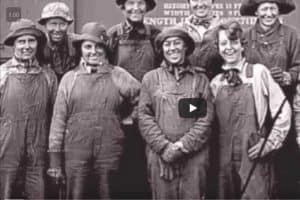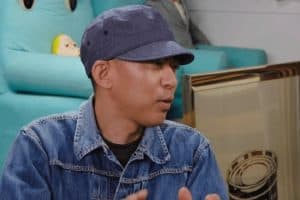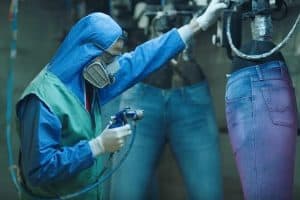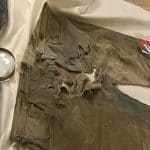Preserving the Past

Preservation of historic garments, some of them more than 100 years old, is an important aspect of the Archives’ work
Transcript
textiles tell a story in this particular
instance they tell the Levi Strauss
story it shows how we have evolved as a
company as a manufacturer of textiles
how our society has changed you saw this
one now the company acquires historic
garments from a number of different
sources they might come from collectors
where they might have been found in
abandoned mines we also find clothing at
flea markets or buy items from consumers
everything in the textile collection is
kept in muslin acid-free tissue and
boxes and then stored in a temperature
controlled environment if an item needs
preservation work there are a number of
steps we take to do this this pair of
waste overalls is a very recent
acquisition and we can date them as one
of the very oldest pair of waste
overalls in our collection the reason we
can say this is because of the various
details so we know these date probably
to the 1870s because these waste
overalls are a new acquisition they
definitely are in need of a bath and
that is the first step in any
conservation project and I am using just
plain San Francisco tap water nothing
has been added and I just lay them in
gently and wait for the water to be
absorbed by the textile bits and pieces
are coming off and those aren’t mostly
just little pieces of thread but they’re
in relatively good shape well here
obviously is some printing on the fabric
that was used for the pocket bag
this garments going to require several
more bass until the water comes
absolutely clean and then it’s just laid
out and dried for several more days once
it’s completely dry we will decide what
kind of conservation the garment really
needs to stabilize it if it needs
patches if it just needs some very
rudimentary stitches and that’s the
second step in the process of
conservation I’m going to start a
conservation process on this particular
shirt it dates to 1910 we acquired it
from a bunkhouse in the Sun and Sierra’s
a bunkhouse for minors it was encrusted
with literally years of grime and dirt
from the mines these are probably stains
from candle wax which it’s very very
common especially in mines because the
miners were a band across their head
with a small stumpy candle and as they
worked the candle wax would drip down on
their clothing because there are several
tears along the front of the shirt what
we want to do is stabilize the whole
area and give it a foundation or lining
taking or muslin now putting it
underneath positioning it so all the
areas that need to be patched will be
covered I use a white thread because
it’s a contrasting thread and there’s no
made no attempt to hide the patch
because you just want it to be as
obvious as possible if anyone does want
to remove any of this for further
research perhaps on the garment and
modern conservation techniques would be
just to stabilize the garment don’t make
any attempt to hide a tear so it gets
wrapped up in its muslin and goes back
into the acid-free box
this garment is an example of
conservation that has been done on a
waste overall it’s called the Nevada it
had quite a few tears and rips and we
had to do some conservation on it it had
already been laundered somewhere along
the way so it didn’t have to be dipped
or bathed
we closed up the crotch and again you
can see simple contrasting stitches easy
to remove but no other attempts have
been made to prettify the garment just
to stabilize it when you put the whole
picture together you can actually read
into a garment by the drape of it or the
little details that it leaves behind you
can see where his knee was you could see
if he wrote a horse for 10 hours 18
hours a day he was the the working man
whether he was a miner whether he was a
laborer a farmer or rancher or a
railroad engineer these garments that we
have here all tell the story they belong
to somebody in a particular time that’s
far far away from what we see today

